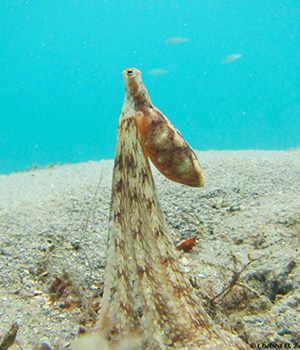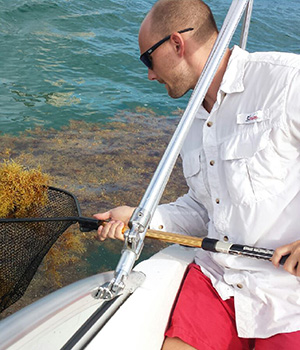Randy Brooks
Education
- Ph.D., Florida State University, 1984
Research Interests
- Behavioral/physiological ecology of marine organisms
Research Description
My research emphasis has been in the area of behavioral/physiological ecology of marine organisms, with a particular interest in symbiotic associations. These associations represent tremendous potential in demonstrating alternatives to competition as major selective agents. The significance of coevolutionary adaptations by associated organisms is just recently being acknowledged as a major evolutionary force (e.g., endosymbiotic hypothesis for development of eukaryotes). Specifically, I have studied associations involving organisms that live with cnidarians, including dinoflagellates, fishes, hermit crabs, and shrimp. Some past activities include monitoring of coral reef conditions using video transects, and temperature-induced bleaching response of zooxanthellae living in cnidarians. More recent projects involve: 1) behavioral interactions among echinoderms and symbiotic crabs; 2) symbiotic shrimp/sea anemone behavioral interactions; 3) predator/prey and symbiotic interactions within the Sargassum (pelagic, floating brown alga) community, and 4) octopus ecology and classification. My research has been extramurally funded.
Recent Publications
- D. Cox, W. R. Brooks, 2023. The role of chemical cues in locating the host pelagic Sargassumspp. by the symbiotic fish Stephanolepis hispidus. Symbiosis, 90, 151–158.
https://doi.org/10.1007/s13199-023-00924-w
- J.L. Frahm, W.R. Brooks, 2021. The use of chemical cues by sargassum shrimps Latreutes fucorum and Leander tenuicornis in establishing and maintaining a symbiosis with the host Sargassum algae. Diversity, 13, 305. https://doi.org/10.3390/d13070305
- C.O. Bennice, W.R. Brooks & R.T. Hanlon, 2021. Behavioral provide insight into resource exploitation and habitat coexistence of octopus species in a shallow Florida lagoon. J. Experimental Biology and Ecology. https://doi.org/10.1016/j.jembe.2021.151592
- M.A. Salazar, W.R. Brooks, 2020. Functional significance of decorating and associated behaviors in the crab Microphrys bicornutus (Decapoda, Brachyura). Journal of Marine Science & Research Development Marine, 10: 283
- C.O. Bennice, A.P. Rayburn, W.R. Brooks & R.T. Hanlon, 2019. Fine-scale habitat partitioning facilitates sympatry between two octopus species in a shallow Florida lagoon. Marine Ecology Progress Series, 609: 151–161, https://doi.org/10.3354/meps12845
- L.E. West & W. R. Brooks, 2018. Host location and selection by the symbiotic sargassum crab Portunus sayi: the role of chemical, visual and tactile cues. Symbiosis, 76:177–185.
https://doi.org/10.1007/s13199-018-0561-4



